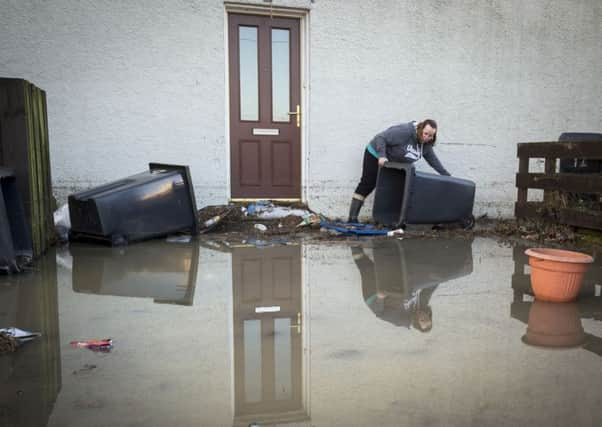Homeowners advised to minimise flood damage


Property owners are contractually obliged by insurers to “mitigate the loss” after such events, making sure the total damage they have to pay for is as small as possible, according to Michael Cooper from Richfords Fire & Flood.
But he added that people should only do what they can safely do, with electricity and contamination from dirty water the main risks.
Advertisement
Hide AdAdvertisement
Hide AdHe said: “Take lots of photographs. The more information you can pass to your insurance firm the better. The more detail you have got about your property the easier it is for them to know what tradespeople you need to come in and get the place back to normal.”
He said the post-flood process can be divided into four categories: Intake, an initial assessment of the damage and making calls to insurers; stabilisation, taking measures to minimise the damage caused by damp; recovery, the longer process of repairing the building and making it habitable and; the closing phase, the administrative work of settling bills with insurers.
People often focused on moving contents that were already “beyond restoration” after being in dirty water for days, he said, including kitchen appliances and furniture.
However it is better to focus on items that avoided direct contact with the water but may be subsequently damaged or destroyed by damp and mould, he said, including items hanging on walls like flat-screen televisions or paintings.
Advertisement
Hide AdAdvertisement
Hide AdThis action against “secondary damage” from damp, mound and rot can also include lifting the carpets once the water has been cleared - as long as you have pictures of it in place after the flood and send them to insurers, he said.
Electric and gas supplies should only be switched on after they have been checked professionally.
PHE also suggests that if you have gas or oil central heating and it has been professionally checked out, keeping it on between 20C and 22C (68F and 72F) helps dry out the property.
Mr Cooper said the recovery phase takes the longest, adding: “Stabilisation may only take a couple of days but some of these buildings have had water in them for 24 to 48 hours. The moisture has had a chance to get into the structure. We are talking about weeks rather than days (for recovery).
Advertisement
Hide AdAdvertisement
Hide AdHe also said people should ask for professional help when they need it, rather than keeping a “stiff upper lip”. He added: “People, particularly the older generation, they don’t like to say things, they don’t want to make a fuss, but insurers will realise they are a vulnerable customer and prioritise.”